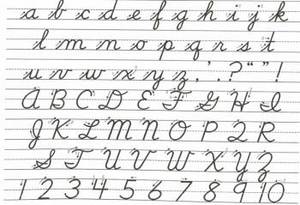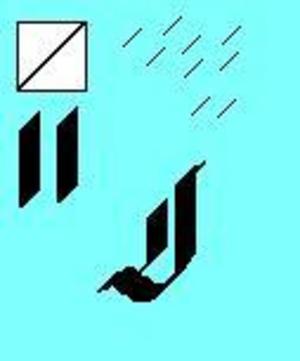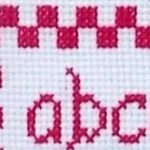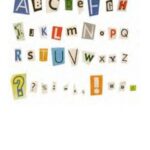By definition, calligraphy is the art of writing beautifully. For those who enjoy this unique art form, calligraphy really is much more than just neat penmanship. It’s a way of expressing beauty by forming letters artistically with thick and thin strokes, and delicate flourishes.
If you know how to write cursive, then you can teach yourself some basic calligraphy. All it really requires are the right supplies, a calligraphy alphabet to refer to, a few helpful tips, and practice, practice, practice.
Supplies
Back in college, our lettering & layout instructor taught us calligraphy using the Speedball C-series nibs in sizes C-0 through C-6. These are still a nice series for beginners to use because they handle quite nicely. Pen nibs are $1.99 each with a complete set running about $8. The nib holders are an additional $1.99, and a one ounce container of black Windsor Newton ink is $3.50. C style pens are great for italic and Roman lettering, accented line drawing, and scrollwork. Total cost for 6 nibs, plus holder and ink is $12. The Speedball C-series is a “dip” pen that needs to be dipped in ink. This technique does takes a little practice to master since spills and clogs happen all too frequently when first learning to write with a dipped ink pen.
As an alternative to the dip pen, cartridge calligraphy pens are very popular with beginners. These pens also have replaceable nibs, but the ink is dispensed through an ink cartridge that fits inside the dib holder. Compared to the dip pens, a cartridge is pretty much mess free. Beginning three dib sets start at an affordable $6 with a deluxe set topping out at $20.
A final alternative is the calligraphy marker. Markers have nibs that are permanently attached and can be purchased individually or as part of an assortment. A six piece color assortment for beginners costs between $8-12. Calligraphy markers are quite popular with scrapbookers.
Last but not least is the calligraphy paper. As students, we practiced on the Strathmore 400 series of calligraphy paper which is priced at $5 for a 50 sheet pad. For final work, parchment or rice paper should be used. These types of calligraphy paper typically run about $10 for a roll of rice paper, or 50 count pad of parchment.
Practicing with the pen
Before our instructor even let us shape our first “A”, we spent a whole class session in learning just how to sit properly and handle the pen. Unlike a ball point pen which was very forgiving, those nibbed ink pens required a steady hand and careful pressure.
For beginners, the wide nib of the Speedball C-2 is a good size to practice with. Don’t worry about writing anything at first, but focus instead on drawing straight lines and swoops. This is done by pressing the nib to the paper at a 45 degree angle and pulling it gently across the surface. Practice pulling the pen towards you from top to bottom, and left to right while keeping the same angle through out the stroke. This will allow an even distribution of ink. You can also experiment a little bit with turning the hand ever so slightly to adjust the width of the stroke. Adjusting the location of the hand will shift the nib and create bolder lines.
Unlike a regular ball point pen where the tip of a pen is pushed into the paper, applying this kind of pressure will cause a nib to dig into the fibers of the paper. This can damage the nib or cause the ink to spray and leave a nice blop of ink on the page. A light touch is all that’s needed for the ink to flow evenly from the pen.
And about that business of sitting properly? You basically have to sit the way you were taught in second grade with back straight and both feet flat on the ground. Part of the key of writing with a steady handy is to position your body in a steady and unshifting position.
Shaping the letters
What makes calligraphy so beautiful are the line variations used in creating the text. Just in holding the pen steady, you will naturally create thick and thin lines as you make your way through the alphabet.
There are many different styles of calligraphy alphabets you can learn. Some can be found in calligraphy books available through your public library or local art supply store. There are also several free on-line calligraphy sites with a number of printable calligraphy alphabets for you to download and enjoy.
Calligraphy is a fun and inexpensive hobby with a practical side to it as well, and really is as easy to learn as your ABCS.






